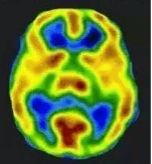Addiction is a very powerful thing. Opioid addiction is even more so. The opioid addiction epidemic has been sweeping our nation for years now.
During this time, medical experts have banded together to devise new and better ways to treat patients suffering from opioid use disorder (OUD). Methadone has long been a tried and true staple in the substance abuse doctor’s trusty toolkit. But how does it work?
In this article, Dr. Robert Sherrick, Chief Science Officer at Community Medical Services and pioneer of several opioid addiction treatment programs in the state of Montana, explains how methadone impacts the brain to treat OUD.
How Addiction Changes the Brain
To understand why methadone is so effective for treating opioid addiction, we first have to look at how addiction changes the brain. People with an addiction have profoundly abnormal brain circuits – which is one reason why it is so hard to treat.
The first time someone takes an opioid, receptors in the brain are stimulated, increasing the level of dopamine and creating the “high” that many people with addiction are seeking. People may describe feeling like they have “a warm blanket” that takes away their anxiety, depression, and other worries – at least until the drug wears off. The natural response is to want to repeat the experience.
With continued exposure to the drug, however, the brain starts to adapt – it gets used to the presence of the drug, and then it takes more and more of the drug to get the desired effect. The brain changes eventually become so extreme that people don’t feel normal unless the drug is present. This process (called neuroadaptation) can happen in as little as a few weeks. Once this has occurred, people will experience uncomfortable withdrawal symptoms whenever they don’t have the drug.
Once people have a severe opioid addiction, avoiding withdrawal becomes the main focus of their daily lives, overtaking all other responsibilities, including their jobs, family, and even children. The fear of withdrawal can drive people to do things they would never usually do – to avoid the suffering of opioid withdrawal symptoms.
What Happens to the Brain During Opioid Withdrawal?
When someone is going through opioid withdrawal, multiple brain circuits “overload.” The brain in withdrawal looks something like this:

Withdrawal symptoms can include sweating, chills, achiness, stomach cramps, nausea, vomiting, diarrhea, and extreme restlessness. While these symptoms are not usually life-threatening, they are extremely uncomfortable – often described as “the worst I have ever felt in my life.”
How Methadone Stops Withdrawal Symptoms
Methadone Makes the Brain Function Normally Again
Methadone uses the same brain receptors that have been damaged by severe opioid addiction to normalize brain function. By occupying the receptors, they prevent horrible withdrawal symptoms that drive people to desperation.
When methadone is present, the brain looks more “relaxed” like this:

All the areas that were “overloaded” during withdrawal are calm, and the brain is back to normal function again.
Frequently Asked Questions About Methadone Treatment
Do People Taking Methadone Get “High”?
Not at all. People with an opioid addiction who are treated with methadone function normally. They don’t get “high” or drowsy.
When you are around them, you would never notice anything different about them – because their brains are now back in balance. Because they no longer need to worry about withdrawal symptoms, they can return to living everyday lives.
Is Methadone Dangerous?
When given in the proper dose, methadone is not dangerous or toxic. It does not damage the body in any way. It does not hurt the heart, lungs, liver, kidneys, or other organs.
Rumors that it “crumbles your bones” or “rots your teeth” are false. Methadone is perfectly safe when taken as directed at the proper dose.
Methadone can lead to overdoses and death when not taken properly – for example, if people take too much or take methadone that is not prescribed to them, or if they combine it with other drugs or alcohol. That is why it is essential for people taking methadone only to take it as directed, keep it safe from children and adolescents, and never to give or sell your medication to anyone else.
What Are the Long-Term Effects of Methadone Treatment?
Since methadone does not damage the body in any way, there is no urgency to stop it if it is helping. Once the abnormal brain circuits have been normalized, people can stay on a dose that works for them or decide to taper off slowly. By tapering slowly, they can give the brain time to heal. Eventually, they may be able to go back to how they were before their opioid addiction without assistance from medication.
How Well Does Methadone Work?
Methadone is by far the safest and most effective treatment available for people who are struggling with opioid addiction. If you or someone you know needs help, please let them know that effective treatment is available and that they are not alone in their suffering.
Get Treatment for Opioid Addiction at Community Medical Services
At Community Medical Services, we care about our clients and dedicate ourselves to treating all with respect and compassion. We understand how difficult it can be to struggle with opioid addiction. We are here to listen and help in any way we can.
Our primary goals are to keep our clients alive (prevent overdoses) and help them thrive – to work with them on their journey to recovery. The first step in that journey is to call or come into one of our clinics – we are there to help you every step of the way.
Book an appointment at a Community Medical Services clinic near you.












